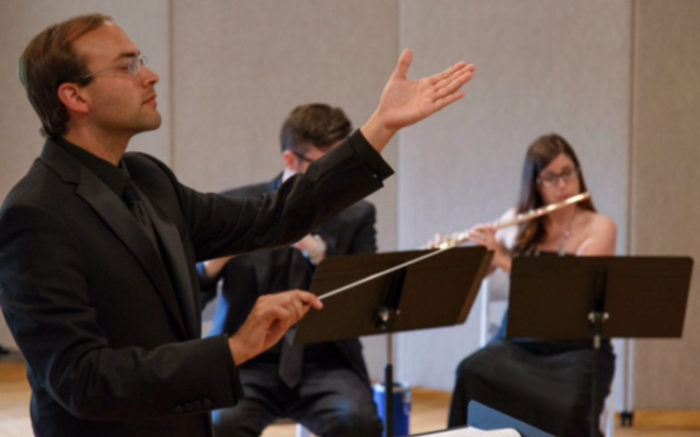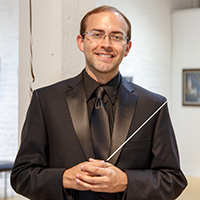
As music educators we aspire to be better communicators. In spite of this, we oftentimes let our passion for our subject lead us to explanations that use too many words or lack true clarity. As we continue to develop we find those phrases that ring true with a wide audience. Our understanding of pacing improves. We become more attuned to what can be academically consumed within a single class period. However, as our verbal communication and teaching improve it is easy to neglect another form of communication; our conducting.
It is particularly easy to let our conducting go in the classroom. This trend would seem counter-intuitive. In addition to its intrinsic importance, this skill serves for most of us as our primary performing outlet. Surely we pursued teaching music because we were affected by the power of performing at a high level. Yet after we graduate and enter the field it seems so easy to forget the power this non-verbal communication offers. Embracing conducting can help us become more be fully involved and positively influential in the successful performances of our programs.
I’d like to suggest three easy conducting etudes for use in the classroom. I claim no responsibility for these ideas. They simply represent good advice I have collected from great conducting teachers. I have practiced each etude with my students, who always seemed to appreciate the opportunity to become involved with my musical development.
Etude #1: Ensemble Critique
Pick a habit you dislike about your conducting – we all have them. It might be the way you hold your baton, a gesture you feel you use too often, or the habit of looking down at the score too often. It could even be verbal, such as repeating rehearsal letters multiple times before the musicians play a section. Tell your ensemble that you are working on this skill, and that you would like them to stop playing when you make the error. The kids will love holding you accountable, and you’ll get quick feedback.
Etude #2: Left Hand Isolation
We all generally feel comfortable showing time to our ensemble. It is the expressive elements of the music that can become technically cumbersome. Take a piece with some music that has a single consistent tempo, like a march, and use only expressive conducting in the left hand to shape the music.
No beating time allowed!
Think about how you can show the difference between a long melodic line in flute and euphonium and buoyant offbeats in your horn section. Use the left hand to spotlight the primary voice and have the ensemble ear-map to that person.
Etude #3: Silent Rehearsal
Remove speaking as a rehearsal tool! This isn’t a novel rehearsal strategy by any means, but we can use it as an opportunity to be hyper-critical of how we are moving and if we are communicating effectively. If your musicians are playing too legato, how can you change your pattern to encourage them to play staccato? You may find yourself with many more eyes on you than normal because all of your instruction will require your ensemble’s visual attention.
These etudes are only three suggestions for countless ways your can push your own musicianship in the classroom environment. Additionally, we can all benefit from seeking out other good teachers and conductors in our areas and having them watch us work. We can only gain through reaching out into our artistic communities. Every effort made to improve our skill as conductors and communicators will improve our effectiveness as an educator and provide invaluable growth to our efficiency.
 Tyler Austin is a DMA wind conducting candidate at Michigan State University, where he studies with Dr. Kevin Sedatole. He previously taught band, choir, percussion ensemble, and general music classes at St. John’s Catholic Prep in Frederick, MD, and maintained an active schedule as a conductor and bassoonist.
Tyler Austin is a DMA wind conducting candidate at Michigan State University, where he studies with Dr. Kevin Sedatole. He previously taught band, choir, percussion ensemble, and general music classes at St. John’s Catholic Prep in Frederick, MD, and maintained an active schedule as a conductor and bassoonist.
Austin is the founding artistic director of the Maryland Wind Festival. This week-long summer concert and workshop series brings young artists together from around the country.